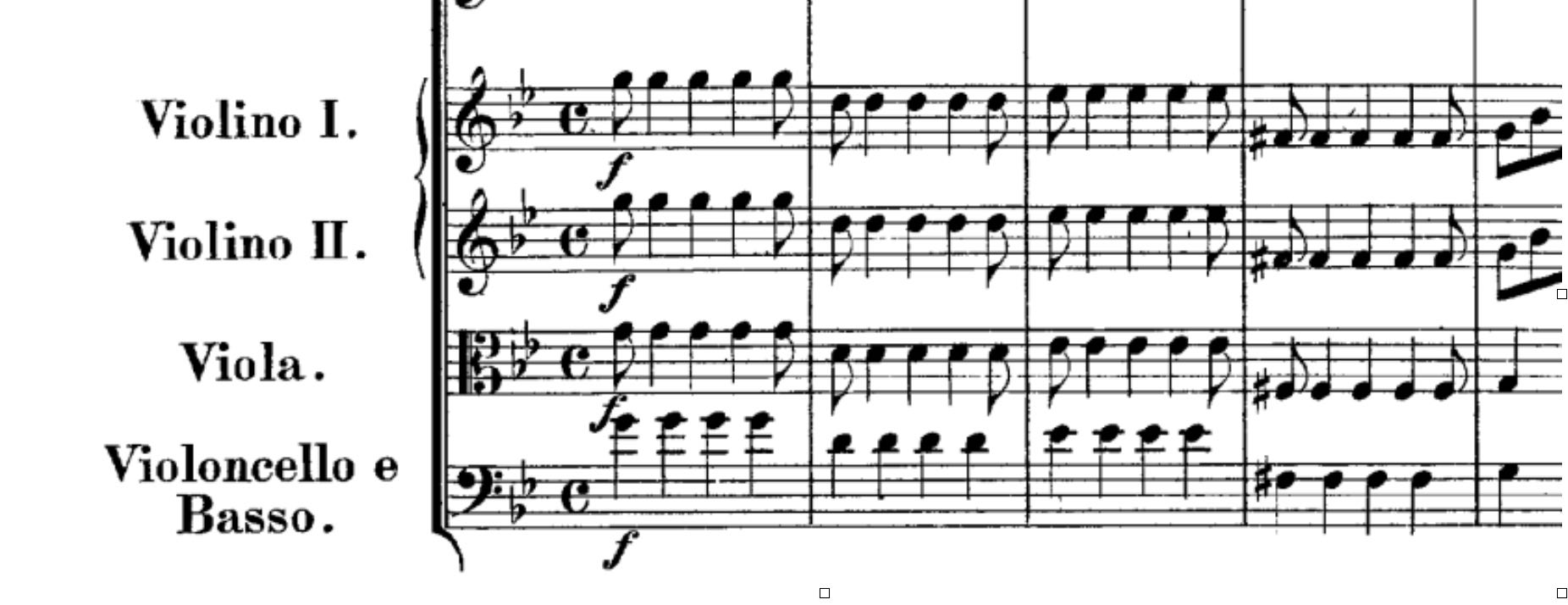Why Is It Called a Double Bass?
Anyone who has played bass has run into this problem: you tell someone that you are a bassist, and they start to make air guitar slapping motions, or they ask you if you are in a rock band, or they say with a wry grin, “Ah, so you were a guitarist who couldn’t cut it, then?” Respectfully, we all sigh and say, no, that is something else entirely: we are cellists who couldn’t cut it.

I am kidding, of course, because bass and cello are quite different! Nevertheless, we often find that we have to explain what a bass is, making sure to distinguish it from the electric bass guitar that pops into everyone’s mind these days when they hear the words bass or bassist. There are a lot of ways that we have figured out how to do this, and each bassist I know seems to have their own. You can call it an upright bass, or a standup bass, or an acoustic bass, or a bass fiddle. If that does not ring a bell, you can try more formal names like bass viol, bass violin (a misnomer of sorts), contrabass (or kontrabass, if you like that spelling), string bass, double bass, or even violone (literally, “big viol” in Italian), though that last one is not preferred because of its other associations with viol consorts. Often one finds that these names, too, are unfamiliar, and instead one says, “It’s the thing that looks like a violin, but a lot bigger—not the cello, which is smaller and played while seated, but the one even bigger than that. You know, the biggest one in the orchestra, or, like, the one you see in jazz bands.” Needless to say, it can be frustrating, but we deal with it because we love the bass! That is, the double bass, the bass viol, etc.
As for myself, I prefer to refer to the instrument as the double bass, at least while speaking of it in English. The reason for choosing one name over another seems to fall mostly into aesthetic preferences and trends within communities. Jazz bassists are more likely to refer to the instrument as the upright bass or acoustic bass to distinguish it from the bass guitar, which is also used in jazz music extensively. Players of classical music do not usually need to make such a distinction, and so bass viol, string bass, or double bass/contrabass are more common—or simply bass! When speaking to musical laypersons, that is when the explanatory comments often need to be brought out. My preference for “double bass” comes from my focus as a classical musician, my need to distinguish it from bass guitar among my students (most of whom play bass guitar as well), and my own personal opinion that it is good to use English terms as much as possible when teaching music in English, even if many English terms are borrowed from other languages, like the word bass itself. Speaking of which, what does that mean? Why do we use that word for it?
The word bass comes from the French basse and Italian basso, which in turn come from the Latin word bassus, itself related to the word basis, which came to English via Greek. If you have ever made puns about the bass being the “basis” or foundation of musical texture, it was not so much a pun as it was a linguistic cognate! Bassus means “low” or “foundational” in Latin, and so, too, is its meaning in modern languages, though the word endings have changed (or disappeared, in the case of English). The bass—and any instrument referred to as a bass instrument—is called such because it is low in pitch. Those with a voice in the bass range are those with low voices, and the bass clarinet is a lower-pitched version of the clarinet, etc. You might encounter this usage with many instruments, along with other familiar words. Consider the soprano saxophone, the alto recorder, and the tenor trombone. The string bass is not the only instrument that is named after its range. The words soprano, alto, tenor, and bass all come to us from polyphonic vocal music in the Middle Ages where their Latin forms were used to describe voice parts that were added above (altus, “higher”, and superius, “highest”) the original part, called the tenor (“to hold”, i.e., to preserve the original melody), as well as one added below it, lower in pitch: the bassus part. If there was a part added even lower, it was called the contrabassus in Latin: the part that goes “counter” to the bassus, which is to say that it is a unique part, often in contrary motion. Ah, we have come full circle with the Latin.
So, in summary so far: a bass is low in pitch, and a contrabass is even lower in pitch, which is why the bass clarinet is an octave lower than the standard soprano clarinet, and why the contrabass clarinet is an octave lower than the bass clarinet. But hold on a moment: I thought the bass was a bass instrument? Are you trying to tell me that the bass is actually lower than a bass instrument? That it is a contrabass instrument? Yes! Unlike a violoncello, which is a true bass instrument (though its range extends quite higher than that), the double bass can perform pitches in the first octave of the piano keyboard. A bass with a low C extension on the fingerboard can play a full octave below the lowest pitch on a cello in standard tuning. The word contrabass, like bass and tenor and alto and soprano, simply refers to the instrument’s range of pitch and subsequent role in multi-part harmonic composition. A contrabass clarinet is also a “contrabass” as such, but, since the string bass is the most common contrabass instrument of the modern orchestra, it has earned the privilege of being the only instrument in that range that we have deemed appropriate to name by nothing more than its pitch range.
Now, I am not going to pretend that these naming conventions are not messy. One might ask why it is still called the string bass and upright bass and acoustic bass instead of the string contrabass and upright contrabass, etc. Is it more appropriate to refer to the bass guitar as the contrabass guitar? I would not recommend that because only a few would understand the joke, but all we are doing here is referring to pitch ranges. The additional descriptors that we find in terms like string bass and bass viol help to differentiate the double bass from other bass (or contrabass) instruments like the bass clarinet, the bass trombone, etc.
At last, let us go back to my own preferred term for the instrument: double bass. The string bass received this name due to the practice of doubling the bass part played by a bass instrument—namely, the cello part. Recall from above that instruments like the cello are, in fact, bass instruments themselves, and the string bass is a contrabass instrument, at least in its grumbling, ground-shaking lowest octave. The standard string orchestra thus has a bass part without the bass itself. This helps to explain the confusion that often surrounds the string quartet, which is scored for a soprano/alto/tenor/bass “choir” of strings, so to speak. Many are baffled at first to see that the standard string quartet is a first violin (soprano), second violin (alto), viola (tenor), and cello (bass). This standardization is true for larger string orchestrations as well. Where can the double bass fit in? By doubling the cello part an octave lower, more or less. Now it may be clear why orchestral scores rarely had separate string bass parts before the nineteenth century. It is standard to see “violoncello and bass” (or violoncelle et basse, or violoncello e basso, etc.) on scores if the double bass is to be mentioned at all.
Example: opening measures of Mozart’s Symphony No. 25 in G Minor, K. 183

In conclusion, the bass has a dizzying array of names because it has been distinguished from similar instruments by an array of features: whether it is acoustic or electric, whether it is played upright or sideways, whether it is a viol (i.e., tuned in fourths with sloped shoulders) versus a true instrument of the violin family (i.e., tuned in fifths with unsloped shoulders), whether it is a string instrument versus a woodwind or brass, its sounding range, and its role is the orchestra as an instrument doubling the bass part. It may seem frustrating to bassists and non-bassists alike that there are so many ways to speak of the instrument, but perhaps such a big instrument is worthy of a big list of monickers. Whatever you choose to call it, just do not call it a cello! Please, we are begging you, it is not a cello. That’s the smaller one, you know, played sitting, and that one has pegs instead of tuning keys and—oh, never mind.



